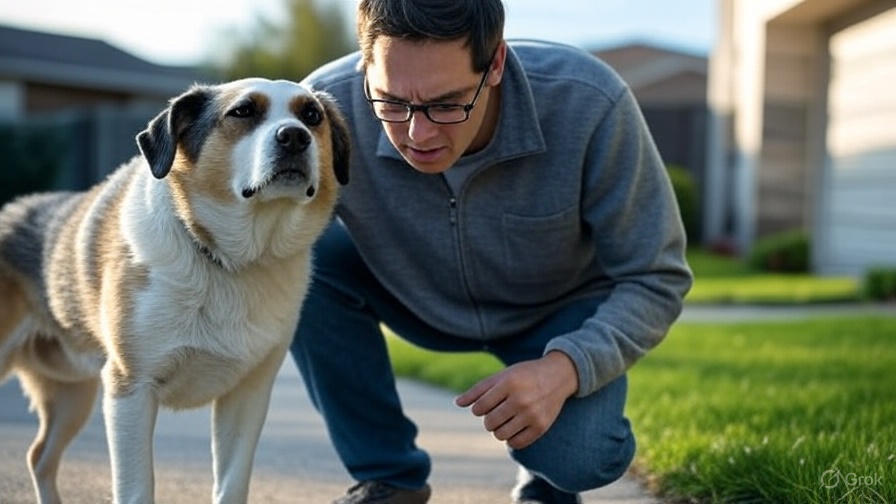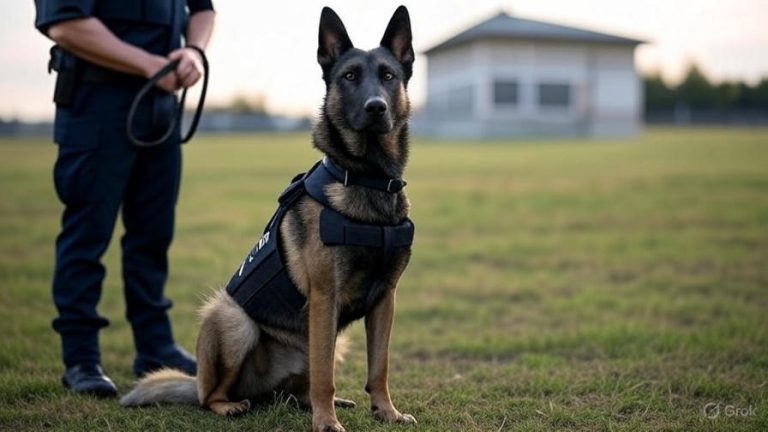How to Make a Dog Throw Up?
Every dog owner faces moments of panic when their beloved pet eats something dangerous. Your heart races as you watch your dog swallow that piece of chocolate, a sock, or medication that dropped on the floor. In these critical moments, knowing how to safely induce vomiting can save your dog’s life.
This guide walks you through the essential steps of emergency pet care, helping you respond quickly and effectively when your dog ingests something harmful. However, remember that inducing vomiting should only be done under specific circumstances and ideally with veterinary guidance.
When You Should Make Your Dog Vomit
Time becomes your enemy when your dog eats something toxic. Acting within the first two hours gives you the best chance of removing harmful substances before they enter the digestive system. The sooner you act, the more effective the treatment becomes.
Several situations call for immediate action. Chocolate poisoning ranks as one of the most common emergencies. Dark chocolate and baking chocolate pose the greatest threat due to their high theobromine content. Milk chocolate causes problems too, especially in smaller dogs.
Grape and raisin toxicity creates another urgent scenario. Even small amounts can cause kidney failure in dogs. The exact toxic compound remains unknown, making any amount potentially dangerous.
Human medications present serious risks when dogs consume them. Pain relievers like ibuprofen and acetaminophen can cause organ damage quickly. Antidepressants, blood pressure medications, and diabetes drugs also require immediate intervention.
Xylitol poisoning demands instant action. This artificial sweetener appears in sugar-free gum, mints, baked goods, and even some peanut butters. Xylitol causes rapid blood sugar drops and potential liver failure in dogs.
Household chemicals and cleaning products create toxic emergencies. Antifreeze tastes sweet to dogs but proves deadly even in small quantities. Rat poison, slug bait, and fertilizers also require emergency treatment.
When You Should NOT Induce Vomiting
Certain situations make induced vomiting extremely dangerous. Sharp objects like bones, glass, or metal pieces can cause severe damage coming back up. These items might tear the esophagus or throat during vomiting.
Caustic substances burn tissues on contact. Drain cleaners, oven cleaners, and toilet bowl cleaners cause chemical burns. Forcing these substances back up doubles the damage to your dog’s throat and mouth.
Petroleum products like gasoline, kerosene, or motor oil can enter the lungs during vomiting. This aspiration leads to chemical pneumonia, which proves more dangerous than the original ingestion.
Dogs showing signs of distress should not vomit. Difficulty breathing, loss of consciousness, or severe weakness indicates the substance has already begun affecting your pet’s system. Vomiting could worsen their condition.
Very small dogs face higher risks from induced vomiting. Puppies under six months old have immature digestive systems that cannot handle the stress. Pregnant dogs also face complications from forced vomiting.
Dogs with certain medical conditions should never be forced to vomit. Heart problems, breathing difficulties, or previous throat injuries make the process too risky. Always consult your veterinarian first if your dog has ongoing health issues.
Contact Your Veterinarian First
Your veterinarian or emergency animal clinic should be your first call. Pet poison control hotlines operate 24 hours a day and provide expert guidance. The ASPCA Animal Poison Control Center (888-426-4435) and Pet Poison Helpline (855-764-7661) offer immediate assistance.
When you call, have specific information ready. Know exactly what your dog ate, how much they consumed, and when the ingestion occurred. Your dog’s weight helps determine the severity of the situation. List any symptoms you’ve observed since the incident.
The poison control expert will tell you whether vomiting is appropriate for your specific situation. They might recommend other treatments or advise you to head directly to the emergency clinic. This professional guidance prevents you from making dangerous mistakes.
Keep the product packaging if possible. The ingredient list helps experts assess the danger level. Take photos of the label if you need to dispose of the container quickly.
Safe Methods to Induce Vomiting at Home
Hydrogen peroxide remains the only safe method for inducing vomiting at home. Use only 3% hydrogen peroxide, the standard concentration found in pharmacies. Never use higher concentrations, as they can burn your dog’s digestive system.
Calculate the correct dosage carefully. Give one teaspoon (5 ml) per 10 pounds of body weight. A 50-pound dog receives five teaspoons, while a 20-pound dog gets two teaspoons. Never exceed three tablespoons total, even for very large dogs.
Administer the hydrogen peroxide using a syringe, turkey baster, or spoon. Lift your dog’s head slightly and squirt the liquid into the side of their mouth. Let them swallow between doses to prevent choking.
Walk your dog around after giving the hydrogen peroxide. Movement helps the solution work more effectively. Keep your dog moving for about 10-15 minutes or until vomiting begins.
Vomiting typically starts within 10-20 minutes. If your dog doesn’t vomit after 20 minutes, you can give a second dose. Never give more than two doses, as excessive hydrogen peroxide can cause stomach irritation.
What to Expect During the Process
Most dogs dislike the taste of hydrogen peroxide and may resist taking it. Some dogs foam at the mouth initially due to the strong taste. This reaction is normal and not dangerous.
The vomiting process itself looks distressing but serves a vital purpose. Your dog may retch several times before actually vomiting. Each episode helps remove more of the toxic substance from their stomach.
Dogs often appear tired or uncomfortable after vomiting. This exhaustion comes from the physical stress of the experience. Provide a quiet, comfortable place for your pet to rest afterward.
The vomited material might not look like the original substance your dog ate. Stomach acids begin breaking down food immediately, changing its appearance. Look for recognizable pieces of the toxic item to confirm successful removal.
Dangerous Methods to Avoid
Never use salt water to induce vomiting. High salt concentrations can cause sodium poisoning, leading to seizures and potentially death. This old remedy creates more problems than it solves.
Syrup of ipecac, once recommended for humans, proves dangerous for dogs. This substance can cause prolonged vomiting and heart problems. Most pharmacies no longer carry it due to safety concerns.
Mustard and dish soap also appear in outdated advice but should never be used. These substances can cause chemical burns and don’t effectively induce vomiting. Stick to hydrogen peroxide as the only safe option.
Physical methods like sticking fingers down your dog’s throat create injury risks. Dogs have strong jaw muscles and may bite reflexively. This approach also rarely works effectively.

After Your Dog Vomits
Monitor your dog closely after successful vomiting. Check the vomited material for pieces of the ingested substance. Take photos if possible, as your veterinarian may want to see what came up.
Withhold food for several hours after vomiting to let your dog’s stomach settle. Offer small amounts of water if your dog seems thirsty. Too much water too quickly might trigger more vomiting.
Even successful vomiting doesn’t guarantee complete removal of the toxic substance. Some material may have already moved into the intestines. Continue monitoring for signs of poisoning.
Transport your dog to the veterinary clinic even after successful home treatment. Professional medical care ensures no complications develop. Blood tests can check organ function and detect any absorbed toxins.
Signs That Require Immediate Emergency Care
Certain symptoms indicate your dog needs immediate professional help. Difficulty breathing, seizures, or loss of consciousness require emergency treatment regardless of what your dog ate.
Excessive drooling, especially if the saliva appears thick or foamy, suggests chemical burns or severe toxicity. Pale gums indicate circulation problems that need immediate attention.
Severe lethargy or inability to stand suggests the poison is affecting your dog’s nervous system. Tremors, weakness, or unsteady walking also indicate serious toxicity.
Persistent vomiting after treatment creates dehydration risks. If your dog continues vomiting for more than an hour, seek professional help immediately.
Prevention: The Best Medicine
Dog-proofing your home prevents most emergency situations. Store medications in closed cabinets or containers your dog cannot open. Keep chocolate, grapes, and other toxic foods in secure locations.
Check your yard regularly for dangerous items. Remove fallen fruit, mushrooms, and any chemicals or fertilizers. Antifreeze spills need immediate cleanup, as dogs find the sweet taste appealing.
Read ingredient labels on all products entering your home. Many sugar-free items contain xylitol, which proves deadly to dogs. Peanut butter, breath mints, and baked goods often contain this sweetener.
Train your dog to “leave it” and “drop it” commands. These basic obedience skills can prevent ingestion of dangerous items. Practice these commands regularly to ensure reliable responses.
Building Your Emergency Kit
Every dog owner should maintain a basic emergency kit. Include 3% hydrogen peroxide, syringes for administering liquids, and your veterinarian’s contact information. Add after-hours emergency clinic numbers to this list.
Keep poison control hotline numbers easily accessible. Program them into your phone and post them near your emergency supplies. Include the Pet Poison Helpline (855-764-7661) and ASPCA Poison Control (888-426-4435).
Store activated charcoal tablets in your kit. While you shouldn’t administer these without veterinary guidance, they help absorb certain toxins. Your veterinarian might recommend their use in specific situations.
Include a digital scale to weigh your dog accurately. Knowing your pet’s exact weight helps determine proper treatment dosages. Update this information regularly as your dog ages.
Recovery and Follow-Up Care
Recovery time varies depending on what your dog ate and how quickly you responded. Most dogs feel better within 24 hours if the toxic substance was successfully removed early. However, some toxins cause delayed effects that appear days later.
Follow all veterinary instructions for post-incident care. Your dog might need special diet restrictions or medications to prevent complications. Blood work may be necessary to monitor organ function.
Some dogs develop temporary stomach sensitivity after induced vomiting. Feed bland foods like boiled chicken and rice for a few days. Gradually return to their normal diet as directed by your veterinarian.
Document the entire incident for future reference. Note what your dog ate, when it happened, and how they responded to treatment. This information helps your veterinarian provide better care if similar situations occur.
Conclusion
Knowing how to safely induce vomiting can save your dog’s life in emergency situations. However, this knowledge comes with serious responsibility. Always contact poison control or your veterinarian before taking action.
Time matters in poisoning cases, but acting incorrectly can worsen the situation. Use only hydrogen peroxide at proper dosages, and never attempt home treatment for caustic substances or sharp objects.
Prevention remains your best strategy for keeping your dog safe. Dog-proof your home, maintain an emergency kit, and teach your pet basic obedience commands. These simple steps prevent most dangerous ingestion incidents.
Remember that successful home treatment doesn’t eliminate the need for professional veterinary care. Even when vomiting removes visible material, hidden damage might still occur. Always follow up with your veterinarian to ensure your dog’s complete recovery.
Your quick thinking and proper response during these frightening moments can make the difference between life and death for your beloved companion. Stay prepared, stay calm, and always prioritize your dog’s safety above all else.







